Julius Seyler (born May 4, 1873 in Munich and died November 22 or November 24, 1958 in Munich) was a German painter and sportsman.As a child, Seyler was found on the ice rinks and also on the Kleinhesseloher See ice skating, in summer he was a rower and sailor on the lakes around Munich, he also devoted himself to landscape painting.When Seyler's father died in 1878, his mother moved with Julius and his sister from Memmingen to Munich to live with their brother, the bank manager and member of the state parliament, Gottfried August Christoph. During the school year 1883/84, Julius entered the Maximiliansgymnasium in Munich, moved to the Alte Realgymnasium in 1888 and left it in 1891. He showed talent with artistic and athletic skills. His uncle determined him to become an officer, but Seyler fled the cadet institute and from 1890 took private painting lessons from Ludwig Schmid-Reutte.In 1892, Julius Seyler became a pupil of Wilhelm von Diez at the Academy of Fine Arts in Munich, in 1898 he passed to Ludwig von Herterich and in 1900 to Heinrich von Zügel and took, among others. 1904, participated in his open-air studies in Wörth am Rhein. from 1899 he was in Diessen or Fischen am Ammersee, and around 1900 in Dachau. In 1900, Seyler began painting outdoors. from 1902, he went on study trips to the Netherlands and Belgium, including studies with Anton Mauve and Jacob Maris, in the Atlantic, Norway, Canada and the United States. In 1903 he moved into an apartment on Lake Ammersee, where he lived and painted until 1912. By this time, Seyler had made a name for himself in the art world and was seeking new challenges beyond the sport. Julius Seyler and the Black-footed Indian Jack Big Moon at Glacier Park Seyler first stayed in Paris in 1909. In Munich, the American of Norwegian origin, Helga Boeckmann, became his painting pupil. He traveled with her to the United States, where the wedding took place on July 30, 1910 in St. Paul, Minnesota. In 1912, the couple returned and settled in Munich. In 1913 Julius and Helga Seyler traveled to the United States again for the wedding of Helga's brother. During the family visit, the First World War breaks out. During and after the war, the couple lived in Balsam Lake, Wisconsin, from 1914 to 1921. Seyler ran a farm and befriended black-footed Indians in Montana. Much of his painting then dealt with the Blackfeet and their history.When Seyler returned to Munich in 1921, he was able to build on his earlier work in Germany. He was a painter of high productivity, the Bayerische Staatsgalerie bought his works and critics applauded. In 1922, the daughter Sigrid Ingeborg was born in Munich; In 1924, the appointment of Seyler as professor h. c. at the Munich Academy of Fine Arts. Seyler visited Paris and the south of France for the third time in 1927; In 1930/35, he stayed several times on the island of Sylt. In the early 1940s, he slowly began to go blind. The Second World War hit Seyler hard: in a bomb attack in 1943 his studio on Georgenstrasse in Munich was destroyed and in 1944 300 works were bombed and damaged. water infiltration in the Pinakothek. Seyler himself survived the war in Hirschau am Chiemsee. After returning to Munich in 1946, Seyler was hardly more productive due to his poor eyesight. Upon his death in 1955, Otto Dix made the death mask.
Julius Seyler (nato il 4 maggio 1873 a Monaco di Baviera e morto il 22 o 24 novembre 1958 a Monaco di Baviera) è stato un pittore e sportivo tedesco. Da bambino Seyler si trovava sulle piste di pattinaggio su ghiaccio e anche sul lago Kleinhesseloher See a pattinare, d'estate faceva il canottiere e il marinaio sui laghi intorno a Monaco di Baviera, e si dedicava anche alla pittura di paesaggi.Quando il padre di Seyler morì nel 1878, la madre si trasferì con Julius e la sorella da Memmingen a Monaco di Baviera per vivere con il fratello Gottfried August Christoph, direttore di banca e membro del parlamento statale. Durante l'anno scolastico 1883/84, Julius entrò nel Maximiliansgymnasium di Monaco, si trasferì all'Alte Realgymnasium nel 1888 e lo lasciò nel 1891. Dimostra talento per le capacità artistiche e atletiche. Lo zio gli impose di diventare ufficiale, ma Seyler fuggì dall'istituto dei cadetti e dal 1890 prese lezioni private di pittura da Ludwig Schmid-Reutte.Nel 1892, Julius Seyler divenne allievo di Wilhelm von Diez all'Accademia di Belle Arti di Monaco, nel 1898 passò a Ludwig von Herterich e nel 1900 a Heinrich von Zügel e prese, tra gli altri. 1904, partecipò ai suoi studi all'aria aperta a Wörth am Rhein. Dal 1899 fu a Diessen o Fischen am Ammersee, e intorno al 1900 a Dachau. Nel 1900 Seyler inizia a dipingere all'aperto. Dal 1902 compie viaggi di studio nei Paesi Bassi e in Belgio, tra cui studi con Anton Mauve e Jacob Maris, nell'Atlantico, in Norvegia, in Canada e negli Stati Uniti. Nel 1903 si trasferisce in un appartamento sul lago Ammersee, dove vive e dipinge fino al 1912. A quel punto, Seyler si era fatto un nome nel mondo dell'arte e cercava nuove sfide al di là dello sport. Julius Seyler e l'indiano dai piedi neri Jack Big Moon al Glacier Park Seyler soggiornò per la prima volta a Parigi nel 1909. A Monaco, l'americana di origine norvegese Helga Boeckmann divenne sua allieva di pittura. Con lei si recò negli Stati Uniti, dove si sposò il 30 luglio 1910 a St. Paul, nel Minnesota. Nel 1912 la coppia tornò e si stabilì a Monaco. Nel 1913 Julius e Helga Seyler si recarono nuovamente negli Stati Uniti per il matrimonio del fratello di Helga. Durante la visita della famiglia, scoppia la Prima guerra mondiale. Durante e dopo la guerra, la coppia visse a Balsam Lake, nel Wisconsin, dal 1914 al 1921. Seyler gestisce una fattoria e fa amicizia con gli indiani dai piedi neri del Montana. Quando Seyler tornò a Monaco nel 1921, fu in grado di sviluppare il suo lavoro precedente in Germania. Era un pittore di grande produttività, la Bayerische Staatsgalerie acquistava le sue opere e i critici lo applaudivano. Nel 1922, a Monaco, nacque la figlia Sigrid Ingeborg; nel 1924, la nomina di Seyler a professore h. c. presso l'Accademia di Belle Arti di Monaco. Nel 1927 Seyler visita per la terza volta Parigi e il sud della Francia; nel 1930/35 soggiorna più volte sull'isola di Sylt. All'inizio degli anni Quaranta cominciò lentamente a diventare cieco. La Seconda guerra mondiale colpì duramente Seyler: nel 1943 un attentato dinamitardo distrusse il suo studio in Georgenstrasse a Monaco e nel 1944 300 opere furono bombardate e danneggiate. infiltrazioni d'acqua nella Pinakothek. Seyler stesso sopravvisse alla guerra a Hirschau am Chiemsee. Dopo il ritorno a Monaco nel 1946, Seyler non fu quasi più produttivo a causa della sua scarsa vista. Alla sua morte, nel 1955, Otto Dix realizzò la maschera mortuaria.

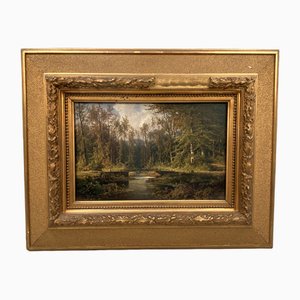
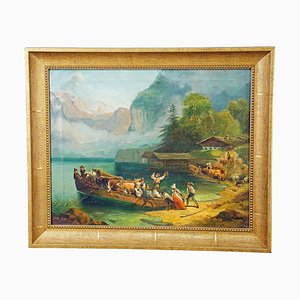
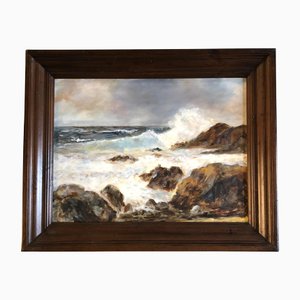
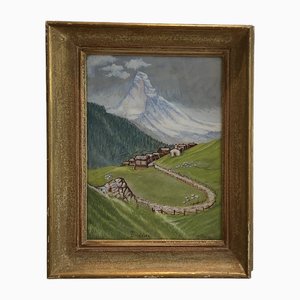
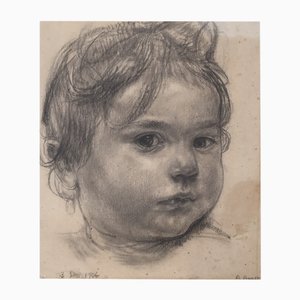
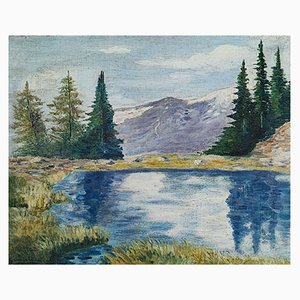


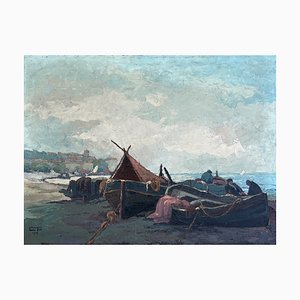
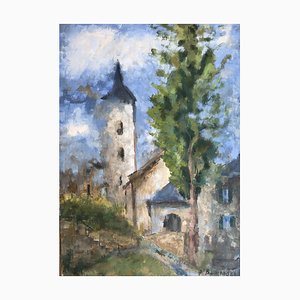
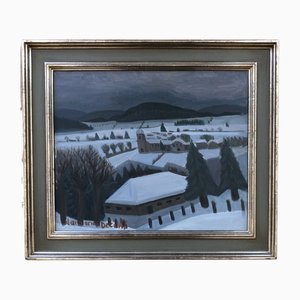
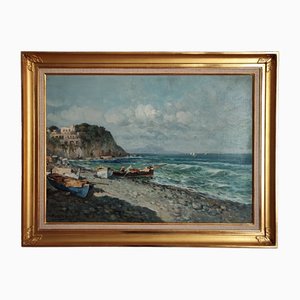

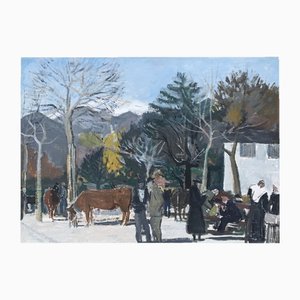
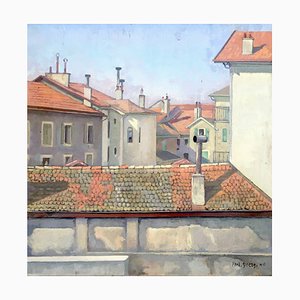

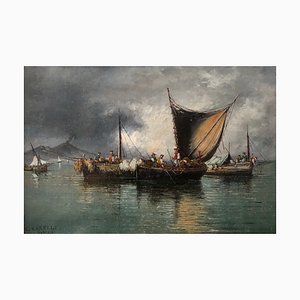

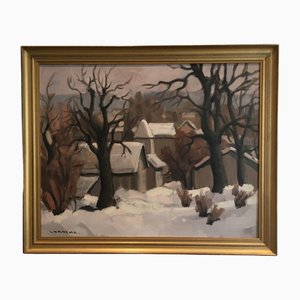
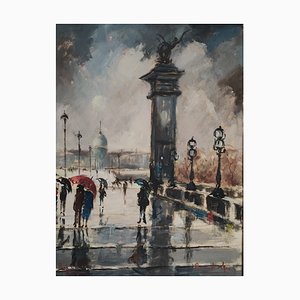

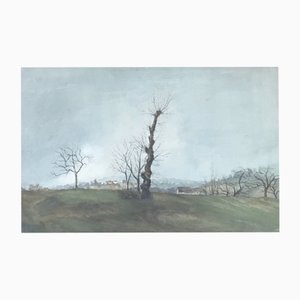
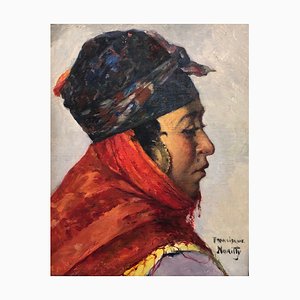
Contattaci
Fai un'offerta
Abbiamo notato che sei nuovo su Pamono!
Accetta i Termini e condizioni e l'Informativa sulla privacy
Contattaci
Fai un'offerta
Ci siamo quasi!
Per seguire la conversazione sulla piattaforma, si prega di completare la registrazione. Per procedere con la tua offerta sulla piattaforma, ti preghiamo di completare la registrazione.Successo
Grazie per la vostra richiesta, qualcuno del nostro team vi contatterà a breve.
Se sei un professionista del design, fai domanda qui per i vantaggi del Programma Commerciale di Pamono